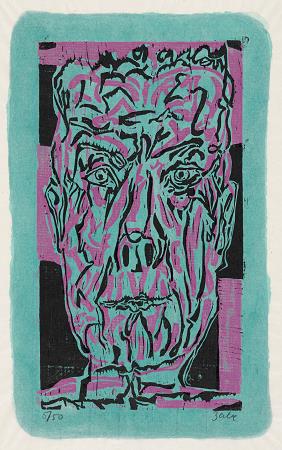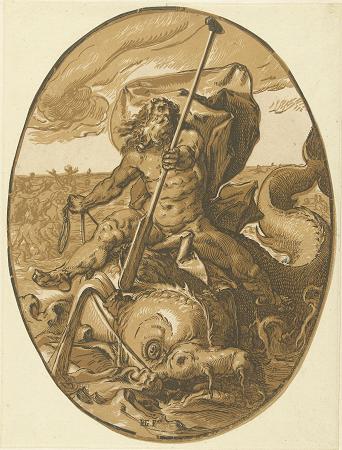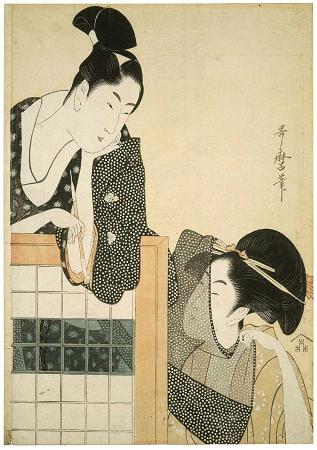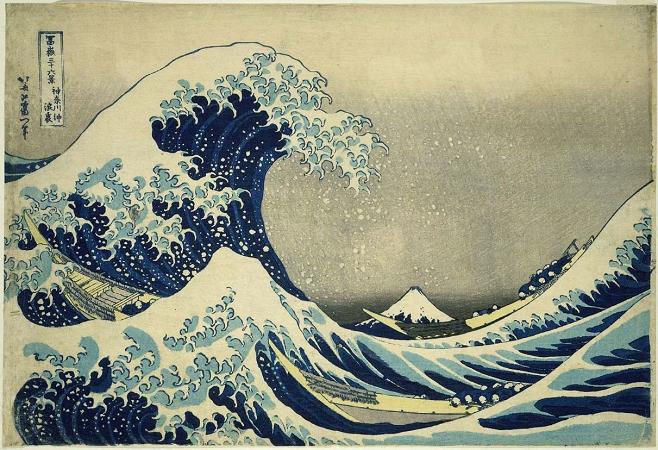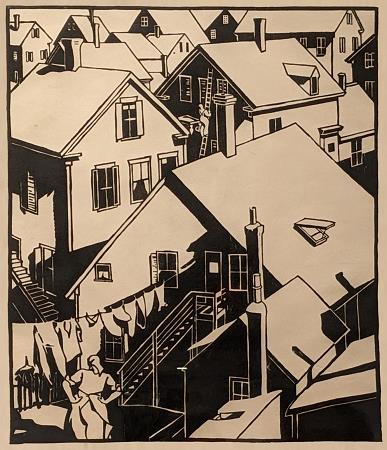Woodcut. Woodcut is a relief printing technique in printmaking. An artist carves an image into the surface of a block of wood, typically with gouges, leaving the printing parts level with the surface while removing the non-printing parts. Areas that the artist cuts away carry no ink, while characters or images at surface level carry the ink to produce the print. The block is cut along the wood grain. The surface is covered with ink by rolling over the surface with an ink-covered roller, leaving ink upon the flat surface but not in the non-printing areas. Multiple colours can be printed by keying the paper to a frame around the woodblocks. The art of carving the woodcut can be called xylography, but this is rarely used in English for images alone, although that and xylographic are used in connection with block books, which are small books containing text and images in the same block. They became popular in Europe during the latter half of the 15th century. A single-sheet woodcut is a woodcut presented as a single stand alone image or print, as opposed to a book illustration. Since its origins in China, the practice of woodcut has spread around the world from Europe to other parts of Asia, and to Latin America. In both Europe and East Asia, traditionally the artist only designed the woodcut, and the block-carving was left to specialist craftsmen, called or block-cutters, some of whom became well known in their own right. There were further specialists who made the blank blocks. This is why woodcuts are sometimes described by museums or books as designed by rather than by an artist; but most authorities do not use this distinction. The division of labour had the advantage that a trained artist could adapt to the medium relatively easily, without needing to learn the use of woodworking tools. There were various methods of transferring the artist's drawn design onto the block for the cutter to follow. Either the drawing would be made directly onto the block, or a drawing on paper was glued to the block. Either way, the artist's drawing was destroyed during the cutting process. Other methods were used, including tracing. In both Europe and East Asia in the early 20th century, some artists began to do the whole process themselves. In Japan, this movement was called sosaku-hanga, as opposed to shin-hanga, a movement that retained traditional methods. In the West, many artists used the easier technique of linocut instead. The Crab that played with the sea, Woodcut by Rudyard Kipling illustrating one of his Just So Stories. In mixed white-line and normal woodcut. Compared to intaglio techniques like etching and engraving, only low pressure is required to print. As a relief method, it is only necessary to ink the block and bring it into firm and even contact with the paper or cloth to achieve an acceptable print.
more...
